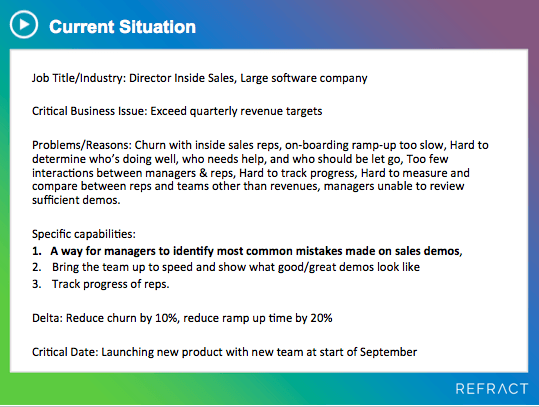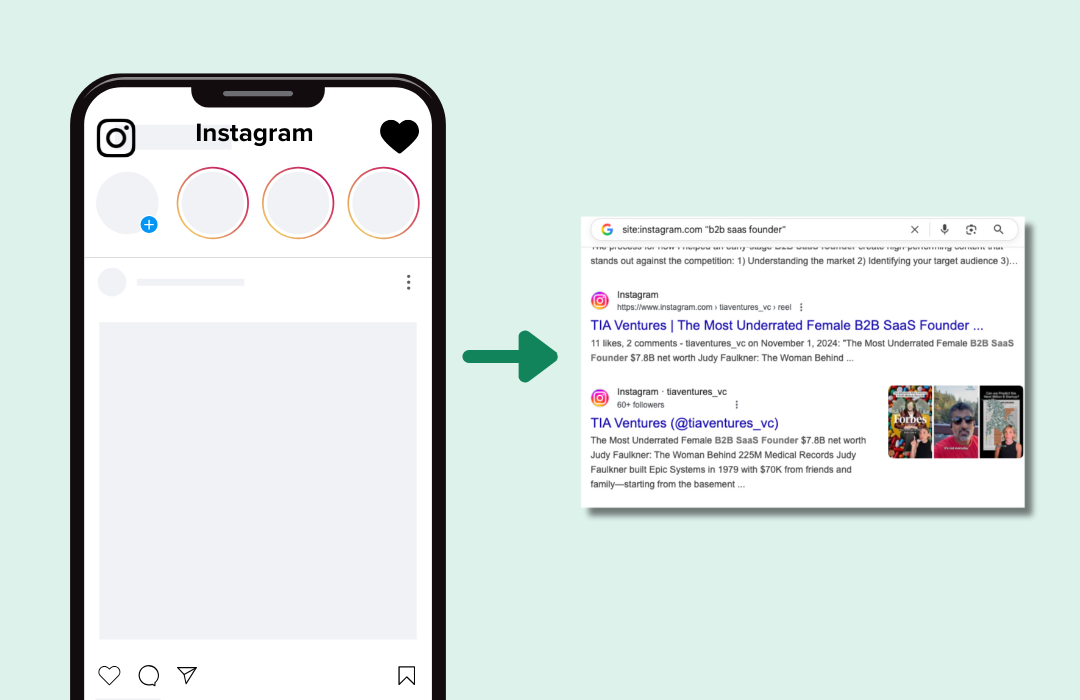Twenty-five minutes. Twenty-five long, hard, painful, yawn-filled minutes. That was the length of time I sat in silence last week receiving a generic, so-called ‘product demo’ from Joe the sales rep (Joe’s real name & company kept private).
Think about how long that must feel, sitting in silence for TWENTY-FIVE minutes being shown and told all of the (quote on quote) ‘really cool’ features of this ‘amazing’ software platform.
It felt like longer than twenty-five minutes that’s for sure.
In fairness to this particular rep, this was by no means the worst demo I had received. They had gone to the bother of asking me a couple of questions right at the start of the call about me, my role, and my objectives – which is more than I sometimes get.
Nevertheless, this twenty-five minute show and tell beauty parade of a product showed something that is toxically prevalent across sales demos. Despite the message of ‘sell the value not the product’ being hammered home for years now, the majority of sales reps still think that when they successfully book that magical sales demo and parade their achievement on the office whiteboard, they think it’s an excuse to deliver little more than a training session of all their wonderful features and functionality.
In some instances, I’m guilty of falling into this trap sometimes too. We’re proud and passionate of our products, and we want to shout from the rooftops about the latest feature release to everyone willing to give up their time to listen. But we need to remind ourselves of the real objectives of the demo and make the absolute most of invaluable sales opportunities. Here are five ways to help you stop training your prospects, and spend more time selling.
Show the last thing first
The aim of the product demo is simple. It is to very clearly and simply prove to the prospect that you have a solution to address their problem. That’s it. Let’s not forget, that for senior decision makers – at best – you may only have 20 minutes to achieve this. As software demo author and expert Peter Cohan of Second Derivative states, “show the last thing first.”
What does this mean? It means that you need to prioritise demonstrating the outcome over how you got there. To give an example, why the hell would your prospect be as or more interested as to how you built a number of email templates than the number of responses the email templates returned?
Think about the last demo you delivered. Did you show the screen with the result first? Or did you start off the demo by training the prospect at how you got there? Humans have short attention spans – with the average said to be just 8.25 seconds – and, if you are like me, can be impatient. Don’t lose the prospect before you have shown how you can help. Show the last thing first.
Banish the phrase ‘this is how you…’
Say the words – ‘this is how you…’ and your brain will automatically stick you into training mode. Once you have said ‘this is how you do x’ once, the likelihood of you saying it again and again within the same demo will increase. Before you know it, you’ve transformed into Joe the sales rep, and are delivering a ‘how to’ webinar rather than a valuable sales conversation.
There may be instances of when showcasing functionally how a specific feature works is required, but this MUST be relevant to the prospect’s needs and the problems you are looking to solve. Do not get tempted to showcase irrelevant features or processes. You are only diluting the focus of the demo, and the chances are the prospect won’t be as impressed with your platform’s latest new shiny integration as you are.
Discovery never stops
How many sales reps are like Joe and ask a couple of questions at the start of the demo only to fail to ask any further questions? How many don’t ask any questions at all? How many sales managers have no idea about the answer to either of these questions?!
I’d suggest the vast majority of salespeople fall into these categories. The reality is that powerful conversations make powerful demos. Even if many questions have been asked on a discovery call the week before, every moment spent with a prospect is a valuable opportunity to further build an understanding of pain points. Make them understand that working with you should be seen as a priority.
The best way to facilitate interaction with a prospect is to ask short questions which divulge long, informative responses – typically resulting in them unveiling bigger and deeper challenges. “Can you tell me more about that?” or “why would this be particularly valuable for you?” are questions which I find get prospects talking more.
Another way to think about it is that using the product demo is a validation exercise. Questions such as – “you told me you had a problem with getting your reps up to speed quickly; how would you see feature ‘x’ helping with that?” Trainers speak more, salespeople listen more.
Constantly prioritize the prospects situation over your product
A useful tool I have found which helps you achieve this, is to transcribe the prospects key pains into a PowerPoint slide (or similar) in big, bold text. This not only acts as a guide for the flow of the demo, but it’s both your and your prospect’s visual, ‘non-changeable’ evidence of their pain points. It acts as a constant reminder to the prospect of his/her challenges, and becomes your demo checklist. It’s also a really effective means of reducing the temptation to ‘feature bash’. I’ve shown an example of one that I have used recently below to bring this to life:

The sales demo could then run something like this:
Sales Rep: “Your pain point number 1 – your rep ramp up time is too slow currently. You need to decrease this by 20%. Is this still a problem for you?”
Prospect: “Yes very much so – in fact, the problem is becoming more of an issue.”
Sales Rep: “Let me show you how we can address this problem…..”
Sales Rep: *Shows the ‘last thing first’.*
Sales Rep: “Do you want me to go any further than that and show how we got there”?
Prospect: “No that’s OK – makes perfect sense to me.” OR “Yes please, that would be useful.”
Sales Rep: “Can you see this part of our product helping you achieve that decreased rep ramp up time?”
Prospect: “Yes I can see how that would certainly be of value”
Sales Rep: “That’s great. Well now we have addressed pain point number 1; let us focus on pain point number 2.”
Following this process will not only give your sales demo a feeling of crispness and focus, but will allow you to control the outcome of the session. You are showing the prospect that you have listened to their needs. If you can get them to verbally agree that you have addressed all of their pain points, you’ll likely finish the meeting with some positive next steps! Since I’ve implemented this method into my own demos, I’ve found my success rate has considerably improved.
Understand the difference between Buyer and User
The demo should be less about the functions of your product and more about addressing the prospect’s problems. “But what’s the point in demoing then?” I hear you say. Well, look at it this way – the person you are giving the demo to is, in all likelihood, not the person who would use the product on a day-to-day basis.
Let me present an example:
You’re selling a product to a VP sales, which will help his SDRs send much more personalized and effective outreach emails. The Sales VP is unlikely to care at this stage about UI, functionality, and shiny buttons. Their main interests are in the ROI they will receive from buying your product (whether that be time saved, money made, or increased productivity). This is very different from the USER of your product – in this case the sales managers or reps, to whom the ease of use, adoption, and functionality is more important. Whilst both of these stakeholders may well end up being involved in the buying process, it’s crucial that you remember this when separating ‘selling’ from ‘training’.







